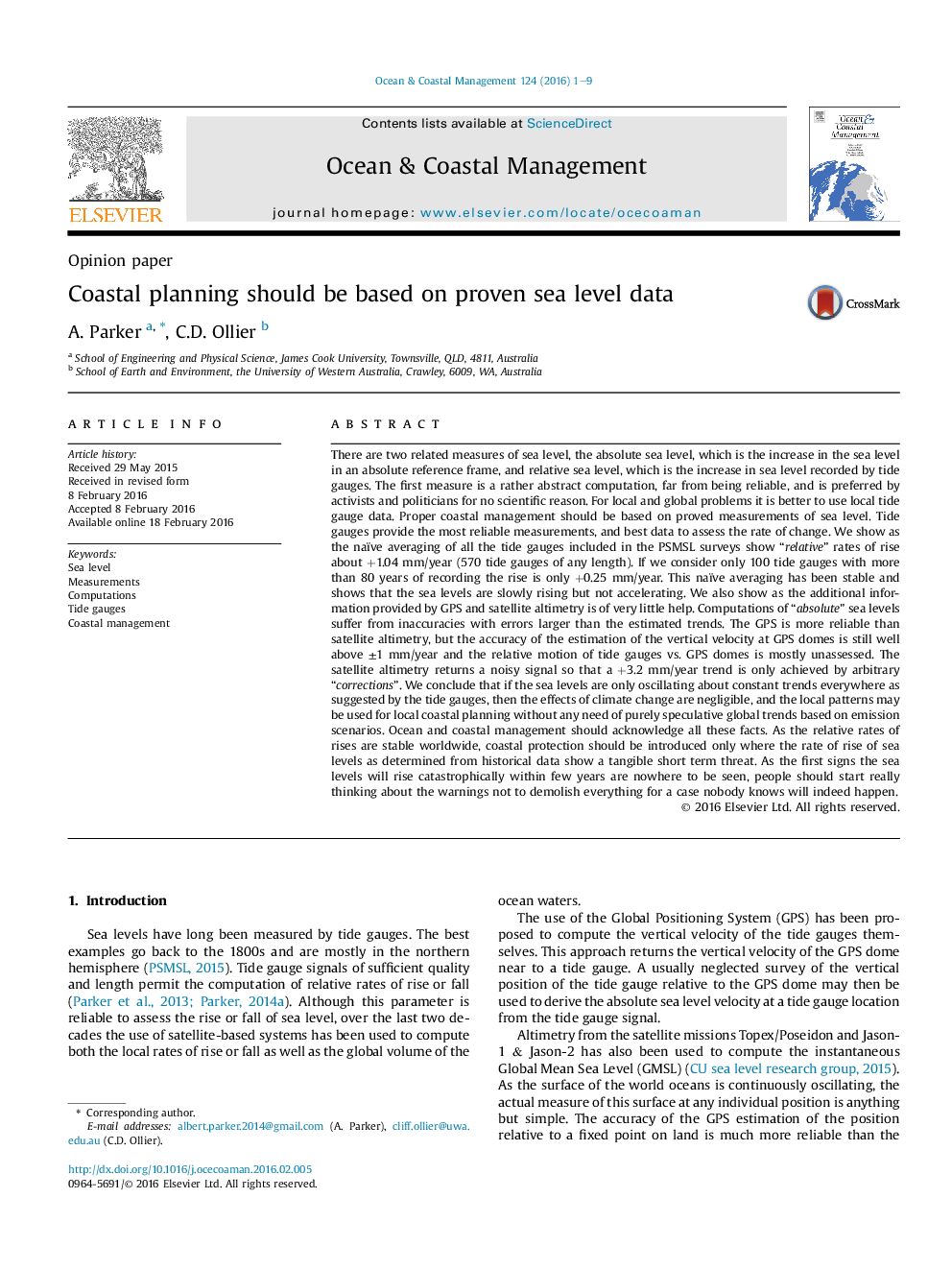| کد مقاله | کد نشریه | سال انتشار | مقاله انگلیسی | نسخه تمام متن |
|---|---|---|---|---|
| 1723365 | 1520505 | 2016 | 9 صفحه PDF | دانلود رایگان |
• The network of tide gauges provides the only information of value for costal planning.
• The worldwide naïve average of sea level is +0.24 mm/year with no acceleration.
• The climate models have crucial flaws making them useless.
• Planning schemes must only reflect the proven local and global historical data.
There are two related measures of sea level, the absolute sea level, which is the increase in the sea level in an absolute reference frame, and relative sea level, which is the increase in sea level recorded by tide gauges. The first measure is a rather abstract computation, far from being reliable, and is preferred by activists and politicians for no scientific reason. For local and global problems it is better to use local tide gauge data. Proper coastal management should be based on proved measurements of sea level. Tide gauges provide the most reliable measurements, and best data to assess the rate of change. We show as the naïve averaging of all the tide gauges included in the PSMSL surveys show “relative” rates of rise about +1.04 mm/year (570 tide gauges of any length). If we consider only 100 tide gauges with more than 80 years of recording the rise is only +0.25 mm/year. This naïve averaging has been stable and shows that the sea levels are slowly rising but not accelerating. We also show as the additional information provided by GPS and satellite altimetry is of very little help. Computations of “absolute” sea levels suffer from inaccuracies with errors larger than the estimated trends. The GPS is more reliable than satellite altimetry, but the accuracy of the estimation of the vertical velocity at GPS domes is still well above ±1 mm/year and the relative motion of tide gauges vs. GPS domes is mostly unassessed. The satellite altimetry returns a noisy signal so that a +3.2 mm/year trend is only achieved by arbitrary “corrections”. We conclude that if the sea levels are only oscillating about constant trends everywhere as suggested by the tide gauges, then the effects of climate change are negligible, and the local patterns may be used for local coastal planning without any need of purely speculative global trends based on emission scenarios. Ocean and coastal management should acknowledge all these facts. As the relative rates of rises are stable worldwide, coastal protection should be introduced only where the rate of rise of sea levels as determined from historical data show a tangible short term threat. As the first signs the sea levels will rise catastrophically within few years are nowhere to be seen, people should start really thinking about the warnings not to demolish everything for a case nobody knows will indeed happen.
a) Computed GMSL from [5], untilted and likely global mean sea level. The GMSL result suffers of a generalised tilting towards high rates of rise. The computations of [5] suffer of arbitrary corrections. What was actually measured until the year 2000 was a noisy signal with about zero slope trend line [8, 10], the untilted result is same distribution of [5] back-tilted to a zero trend line. As the tide gauge result should be used to validate the procedure, the most likely GMSL is however obtained by tilting the distribution of [5] to a +0.24 mm/year trend line.Figure optionsDownload as PowerPoint slide
Journal: Ocean & Coastal Management - Volume 124, May 2016, Pages 1–9
